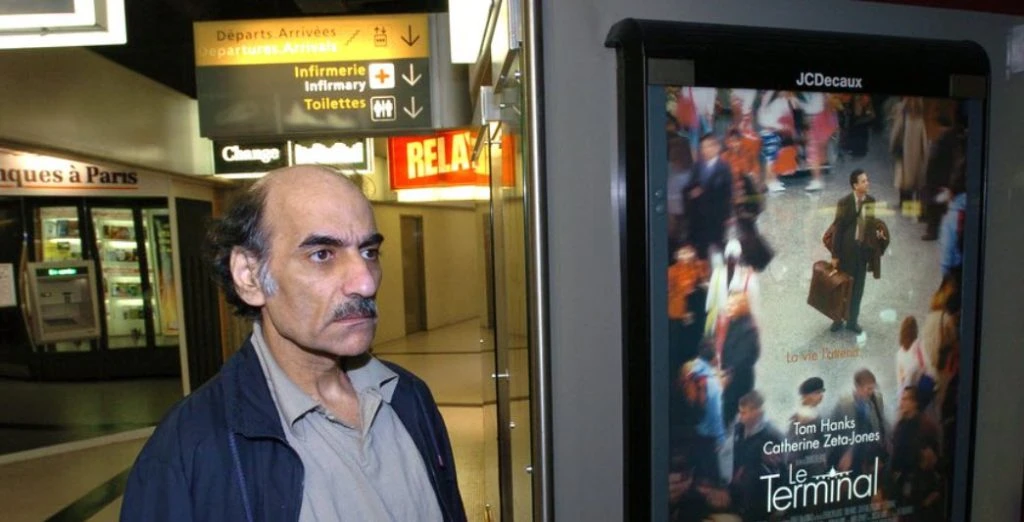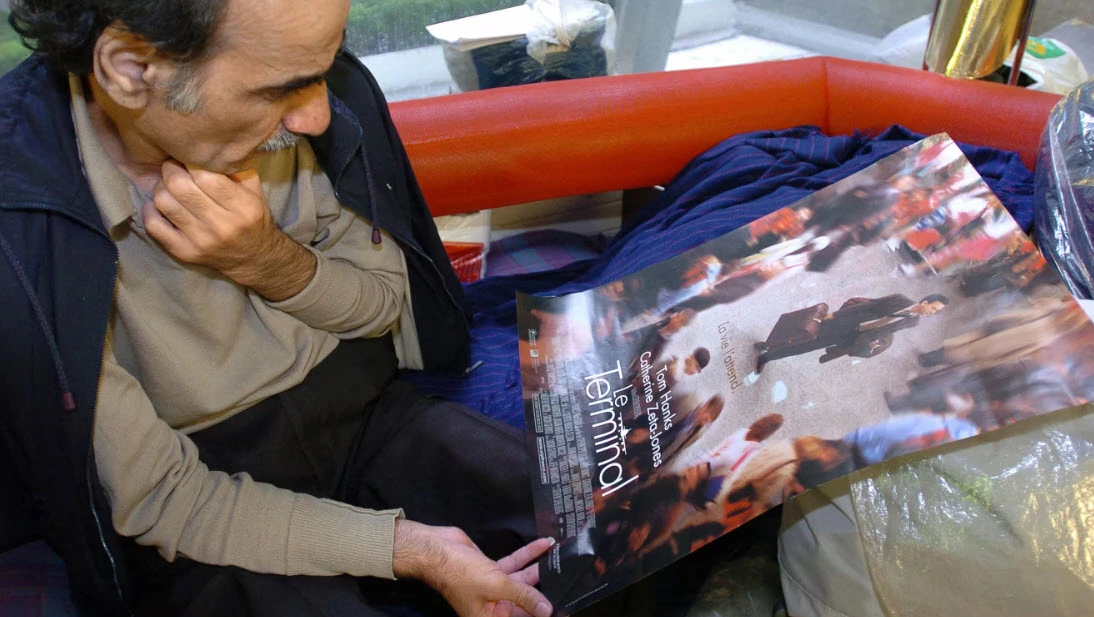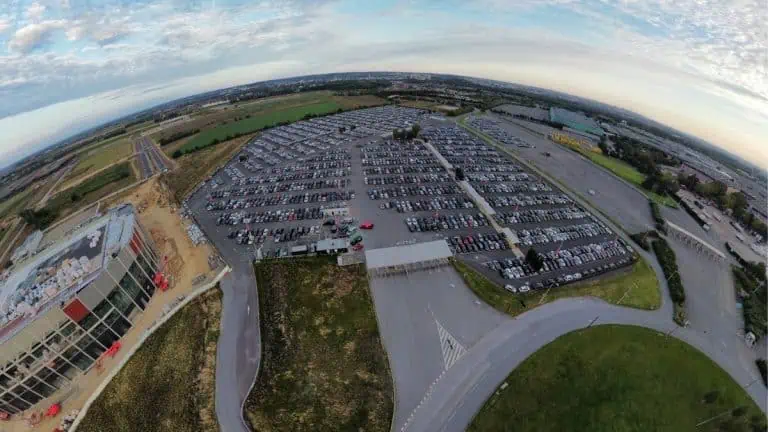The man who lived in an airport for 18 years: Mr Alfred's incredible odyssey at Roissy airport
The story of Mehran Karimi Nasseri, also known as "Mr Alfred", is a real human saga, full of challenges, endurance and moments of great humanity. Living in an airport for 18 yearsBeing in a busy place where people are constantly on the move is hard to imagine for most of us. But that's what Nasseri has experienced, and his daily life has been very different. at Roissy airport is full of anecdotes that reveal his incredible ability to adapt.
Moving to Roissy
When Nasseri arrived at Roissy airport in 1988, he was initially in a desperate situation. Without papers, he could neither leave the airport nor enter France legally. He was therefore forced to remain in the transit zonea place generally designed for very short stays. Over the weeks and months, he began to organise himself. The airport benches became his bed, and he found a routine in this unlikely environment.
Daily life at Roissy CDG airport
Nasseri lived in a corner of Terminal 1close to the shops and restaurants. He woke up early every morning, often long before the airport came alive with the arrival of the first flights. He used the airport's public bathrooms to wash up. For food, he depended largely on the generosity of airport employees, passing passengers and vouchers for airport restaurants.
He spent a lot of time reading. Nasseri was often seen with piles of newspapers and magazines, which he picked up from all over the airport. This reading kept him connected to the outside world, despite his physical isolation. He also wrote a lot, jotting down his thoughts and experiences on sheets of paper that he kept preciously. Sometimes he corresponded with lawyers, activists or journalists who were interested in his case.
Where did he find refuge to sleep in the airport?
Mehran Karimi Nasseri, known as "Monsieur Alfred", used to sleep mainly on the plastic benches at Roissy-Charles de Gaulle airport. He had found a corner in Terminal 1, near the shops and restaurants, where he could settle down every night. Over time, he arranged the space in his own way, using bags and suitcases to create a sort of 'barrier' around his 'bed', giving him a semblance of privacy in a place where he was constantly exposed to the glare of passers-by.
As the airport is a public place, Nasseri never had a truly private place to rest. He slept in plain sight, often wrapped in a blanket or surrounded by his personal belongings. His nights were probably filled with the incessant noise of the airport, flight announcements, and the comings and goings of passengers and staff. Despite these conditions, he managed to create a routine that enabled him to survive in this inhospitable environment.
How did he manage to meet his food requirements?
Mehran Karimi Nasseri fed himself through a combination of ingenuity, the generosity of others, and vouchers he received for airport restaurants.
- The generosity of passers-by and staff The airport staff, as well as some regular passengers, often took pity on Nasseri and offered him food. He sometimes received meals from airport restaurants, or even money to buy food.
- Meal vouchers Nasseri also received meal vouchers from associations, humanitarian organisations and sometimes from the airport itself. These vouchers enabled him to eat in the airport's restaurants and cafés.
- Buying food When he had a bit of money, Nasseri could buy food in the various airport shops. However, his means were very limited, and he often had to make do with simple meals.
- Waste avoided He also sometimes scavenged for food left behind by passengers, or fed himself with what was thrown away but still edible. This was part of his daily routine, given the precarious circumstances in which he lived.
Despite these difficult conditions, Nasseri has managed to meet his basic needs, thanks to a combination of outside help and adaptation to his environment.

The castaway from Terminal 1 who inspired Spielberg's famous film: The Terminal
Relations with airport staff
Over time, Nasseri became a familiar figure to airport staff. Some employees saw him every day and developed a friendly relationship with him. They would sometimes offer him meals or small gestures to help make his situation a little more bearable. He was often smiling and polite, despite the harshness of his condition.
There were also moments of humour. For example, at festive times, some employees would decorate her 'corner' with tinsel or Christmas cards. This added a touch of warmth to her space, and showed how people, even in unusual circumstances, can find ways to connect and help each other.
Medical and legal challenges
Nasseri's health began to deteriorate over the years, partly due to the constant stress and the difficult life in such an inhospitable environment. He was hospitalised several times, and these hospital stays were among the few times he left the airport. Each time he returned, he found his little corner, with his things neatly stacked.
In legal terms, his case has attracted international attention. For years, lawyers worked on her case to try and regularise her situation. But the complexities of immigration law and the lack of cooperation between the countries involved meant that his situation remained blocked for a very long time. It was only in 2006 that his situation was finally regularised, allowing Nasseri to leave Roissy.
What was his subsequent destiny?
After leaving Roissy-Charles de Gaulle airport in 2006, Mehran Karimi Nasseri was hospitalised due to health problems. This hospitalisation marked the end of his 18 years of life at the airport. Once out of hospital, he was taken in by humanitarian organisations who helped him find accommodation in the Paris region.
For the next few years, Nasseri lived in various reception centres in France, where he received medical and social support. Although his story attracted international attention and inspired artistic works, Nasseri led a relatively discreet life after leaving Roissy.
In August 2022, there were reports that he had returned to Roissy airport, not to live there, but to visit the place that had been his 'home' for so many years. However, his state of health and advanced age limited his public appearances.
On 12 November 2022, Mehran Karimi Nasseri died at Roissy-Charles de Gaulle airport, at the age of 76. Ironically, he died in the same airport where he had spent much of his life, bringing to a close a story that had captured the world's attention. His life remains a symbol of the complexities of statelessness and refugee status, and the challenges that legal status and bureaucratic systems can present.
Mr Alfred's incredible adventure reminds us that life can sometimes play surprising tricks on us. So you don't want to find yourself stuck in Roissy for 18 years, think about reserving your car park at Class'Park premium located just 2 km from CDG airport! We'll pick you up in front of your arrival hall and take you by shuttle bus to the car park, where your vehicle will be waiting for you. Because good preparation is the key to a trip without (un)pleasant surprises!







